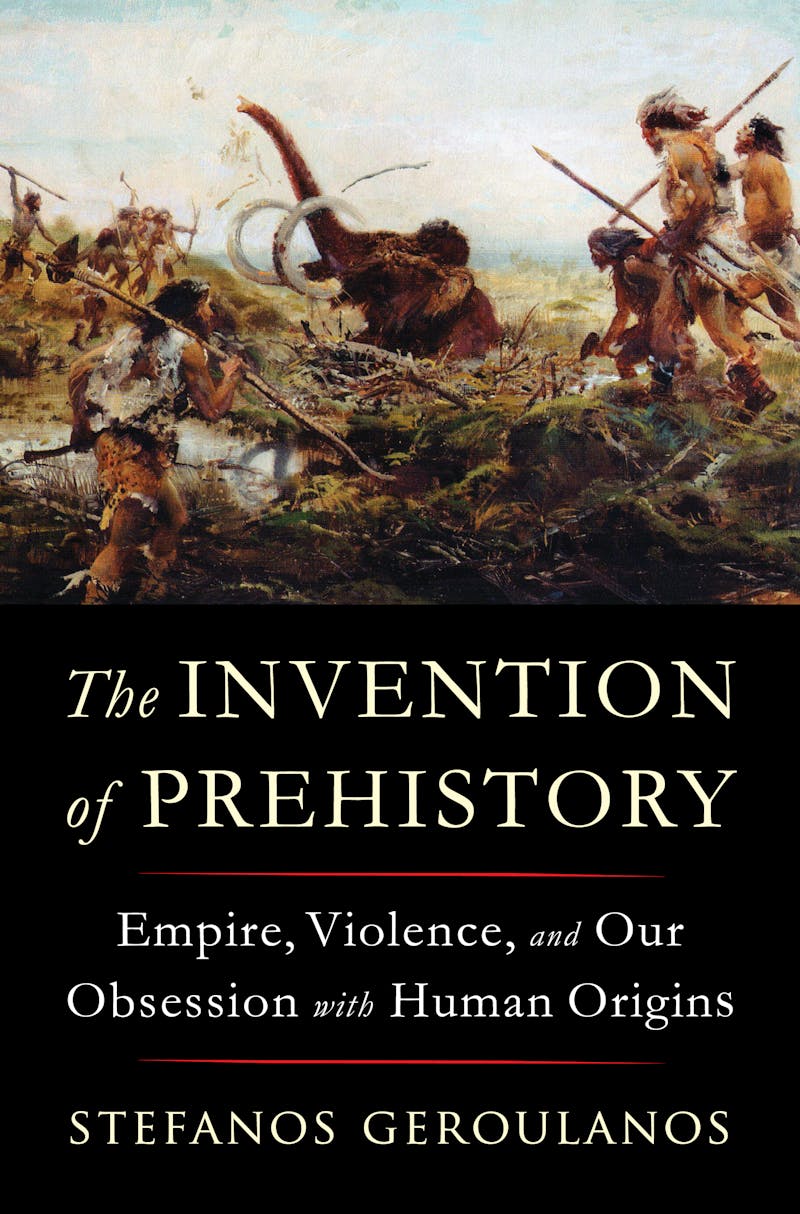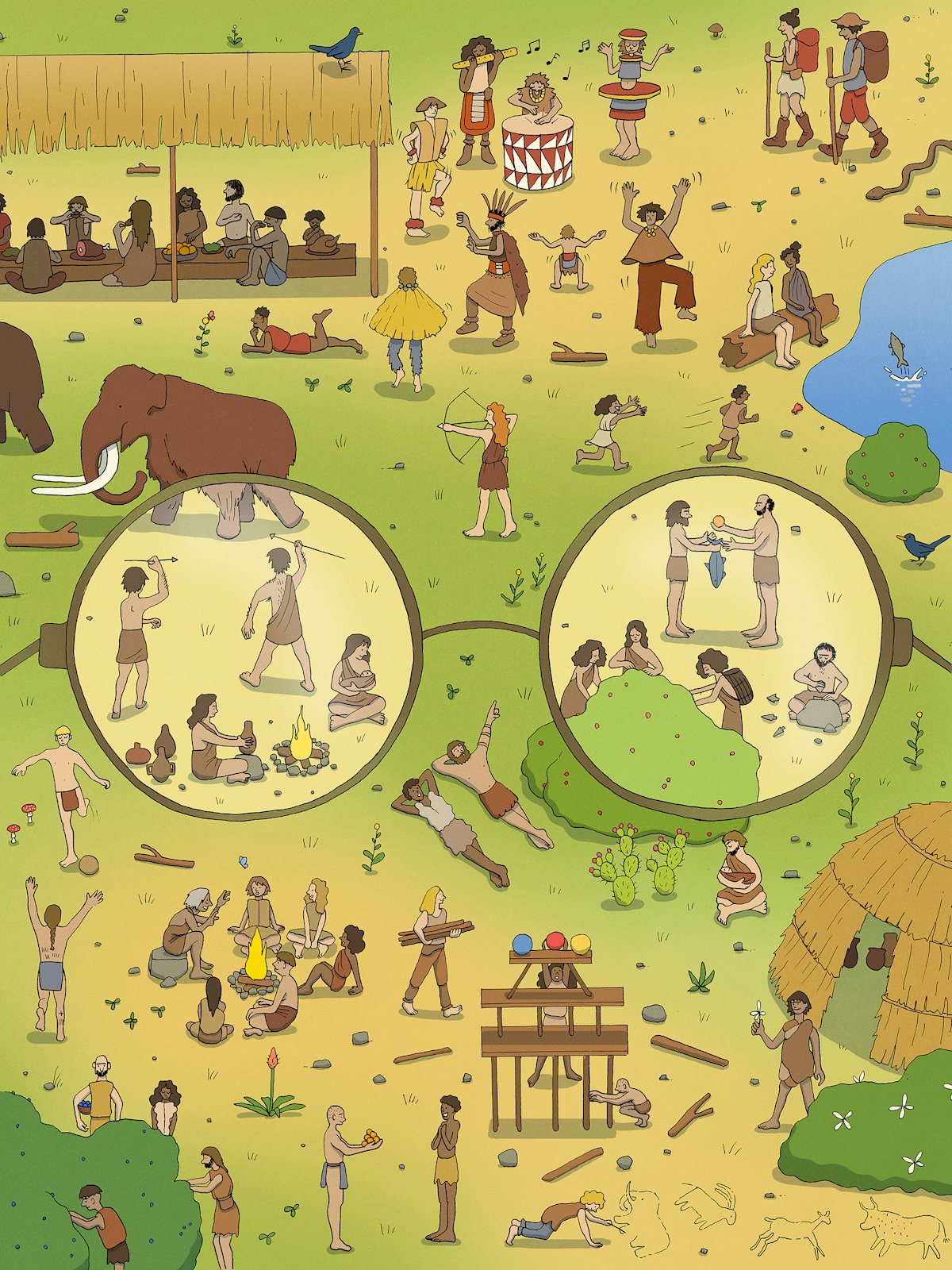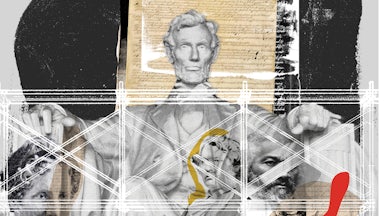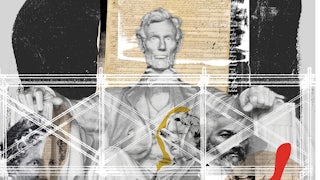Our prehistoric ancestors never went away. This is what Israeli historian Yuval Noah Harari argued in his international blockbuster Sapiens: A Brief History of Humankind (2015), which claimed to uncover our species’ most important characteristics. In Harari’s telling, our brains were shaped in the era of hunter-gatherers and showed little change thereafter. The emergence of language, social hierarchies, and new technologies did little to update who we are: assemblies of raw impulses that always seek food and comfort. As he put it, “we may be living in high-rise apartments with over-stuffed refrigerators, but our DNA still thinks we are in the savannah.”
Harari, however, also claimed that liberal capitalism was an important breakthrough in this history, since it dramatically eased the tension between our innate desires and social limitations. Unlike previous creeds, which expected people to overcome their urges, consumer culture made gratification into a virtue. Harari went so far as to claim that Silicon Valley and its army of venture capitalists were in the process of replacing all national hatreds with consumer-driven virtual communities. As he proclaimed in a passage that reads like Mark Zuckerberg’s fever dream, a “new global empire” of corporations “effectively enforces world peace.”

Others have argued that prehistoric times point to very different lessons. Rather than explaining our base desires, our predecessors were models for anti-capitalist emancipation. This was the claim of the anarchist anthropologist David Graeber (a celebrity since his participation in the Occupy Wall Street movement) and archaeologist David Wengrow, who co-wrote the bestselling The Dawn of Everything: A New History of Humanity (2021). Drawing on a wide range of archaeological findings, the two declared that ancient humans often lived without social hierarchies and without the inequalities of private property. Even as they cultivated complex agriculture and engaged in commerce, they maintained proto-anarchist sensitivities by distributing power and wealth among themselves. For Graeber and Wengrow, this evidence showed that our capitalist present was not in line with human nature, as Harari believed. It in fact represented a betrayal of early liberties, and had to be corrected by returning to anarchism.
With such diametrically opposed claims, it may seem that these books share little beyond pretentious titles. But as historian Stefanos Geroulanos reveals in his original and exciting new book, The Invention of Prehistory: Empire, Violence, and Our Obsession With Human Origins, both are part of the same intellectual tradition: the ambitious desire of European and North American thinkers to transform humanity by reconstructing its deep past. Geroulanos charts the history of this effort, which began in the late eighteenth century, with a dazzling survey of countless anthropologists, scientists, and artists. By studying bones, art in caves, or nomad tribes, these thinkers believed they could answer humanity’s fundamental questions: Are we cruel or compassionate? Monogamous or polygamous? Are there “natural” ways to organize our families, religious rites, or social institutions? The answers they offered varied enormously and often led to bitter disputes. What they all shared, and what they left for us, was the belief that prehistory is the key to understanding ourselves.
In Geroulanos’s powerful telling, this history matters because it shows that an obsession with the deep past can be extremely dangerous. Rather than an intellectual exercise or scientific study, it was born from the oppressive world of modern racism and colonialism. What is more, that legacy continues to poison prehistory today, Sapiens and The Dawn of Everything included. It perpetuates violent and narcissistic stories that prohibit self-reflection. Yet among the many stories that Geroulanos brings to life in his book, readers can also find some examples to the contrary. Can prehistory, despite its dark origins, also occasionally offer some hope?
Before the modern era, Europeans had little conception of prehistory as we know it. Their legends and narratives about the past, most prominently the Bible, went back in time only a few thousand years, and assumed that early humans were not dramatically different from later ones. To be sure, the encounter with the Americas’ native inhabitants, who could not be fitted into the biblical story, led many to question the old stories’ accuracy. It also led to new dichotomies: Some writers in the seventeenth century began to argue that there was a difference between “civilization,” where humans followed strict rules and documented their past, and the “state of nature,” which knew no laws and no recorded history. But in a Europe that was still ravaged by religious conflicts, the gap between the two initially did not seem particularly wide. The political theorist Thomas Hobbes claimed in 1651 that the best example for chaos and lawlessness was his home country of England, which only recently had emerged from a devastating civil war.
In Geroulanos’s telling, two things came together to spark a new understanding of the human past. The first was the Enlightenment’s belief in progress. For figures like philosopher Jean-Jacques Rousseau, humans were naturally endowed with the capacity for self-improvement and critical observation. This was something they were born with as children, and which society corrupted; the goal was to craft social and political institutions that would allow them to preserve these qualities. Such understanding of individual lives was then projected onto humanity, which Enlightenment thinkers began to describe as a child that grows from innocence (the past) through confusion (the present) into self-emancipation (the future). Reflecting on the time before society was a way to explain why clericalism and monarchism, which legitimized themselves by claiming to represent tradition, were a recent deviation from human nature, Rousseau was the most prominent example for this intellectual move. As he proclaimed in Discourse on the Origin of Inequality (1755), people before civilization were happier and freer than in his time. Animated by the belief in science, Enlightenment thinkers inaugurated new ways to study this mysterious period. They systematically studied languages and ancient texts that until then enjoyed little attention.
The second and more important force behind the turn to prehistory was the radical expansion of European colonialism. As part of their justification for new conquests, many white Europeans and their counterparts in North America insisted that Asians, Africans, and Indigenous Americans lived in an earlier mode of existence. They may have breathed the same air and drunk the same water, but they represented an earlier and “primitive” stage of development, which allegedly lacked culture and self-control. The Enlightenment’s love of tripartite schemas proved especially convenient for this purpose, as many thinkers utilized them to divide humanity into three distinct stages. The French biologist Georges Cuvier represented a widespread trend when he categorized all humans as either the “savage” who had no rules, the “barbarian” whose lives were governed by tradition, and the “civilized” who embraced rationality and self-improvement. In this intellectual universe, the study of prehistory was a way to classify Indigenous enemies and explain why they were destined to be superseded by “advanced” races. As the British banker and archaeologist John Lubbock explained in 1870, the value of prehistory was its service to “an empire such as ours.”
The confluence of these two innovations led to an explosion of writing on prehistoric times. By studying early humans (who were now allegedly accessible in the form of Indigenous people), scholars believed they could illuminate what qualities are rooted in our human nature and which ones we acquire by living in civilization. This ambition went hand in hand with a profoundly new understanding of time. To explain why they were so different from their subjugated victims, Europeans and North Americans also began to argue that colonial subjects belonged to a much more ancient period, one that went far longer than biblical stories. In the 1830s, for example, the Danish archaeologist Christian Jürgensen Thomsen claimed that humanity evolved through three long eras: stone, bronze, and iron ages. Each lasted a long period of time and entailed a slow and gradual adoption of new technologies. A few decades later, Charles Darwin extended time ever further back. In On the Origin of Species (1859), he suggested that humans emerged from processes that unfolded over millions of years. The belief in deep time was so widespread that it even extended to the days before men and women. Paleontologists maintained that the giant bones and fossils they found belonged not to griffins or giants, as some imagined, but to massive and frightening creatures that from 1842 became known as dinosaurs.
While the discipline of prehistory evolved and changed over the nineteenth and twentieth centuries, Geroulanos claims that it remained mired in racist and colonial mindsets. Scholars excavated the past to justify the present, especially the racial hierarchies and taxonomies that they crafted. Historians and social scientists, for example, pored over religious texts and archaeological findings to explain why Jews, Roma, or Muslims were inherently “foreign” to the West’s allegedly homogeneous racial makeup. The British-German writer Houston Stewart Chamberlain warned in 1889 that history was an eternal struggle between European civilization and the “Semitic flood” that sought to overrun it. The Nazis seamlessly built on this tradition when they sought to “restore” the lost world of ancient times, which in their minds was defined by strict racial boundaries. They spent considerable energy mapping humanity’s different origins, which they then used to justify their harrowing campaigns of sterilization, war, and genocide. As The Invention of Prehistory shows, racist anxieties continued to animate writers also in the era of decolonization. The American Robert Ardrey, for example, warned that African liberation movements were the vanguard of a race war that would send the world back to the “state of nature.” His bestselling African Genesis (1961) then went on to popularize the theory that human society emerged from “killer apes” that conquered the world.
Another obsession that reflected prehistory’s disturbing concerns was its grim fascination with violence. Novels and scholarly journals overflowed with murder and mutilation, depicting prehistoric humans as inherently aggressive. In Geroulanos’s telling, this was a reflection of colonial anxieties: Because Europeans and North Americans believed that Indigenous and “primitive” people were governed by violent impulses, they assumed this was true also for their predecessors in the deep past. For many commentators, however, the atavistic drive to destroy continued to shape humans even after they matured into civilization. H. Rider Haggard, the popular adventure author of the colonialist novel King Solomon’s Mines (1885), mused that civilization was just a “veneer” that hid our stubborn “savagery.” Sigmund Freud, who was fascinated with prehistory, was the most articulate figure to make this point. In Totem and Taboo (1913), he claimed that civilization emerged after early humans felt guilt over an act of murder. For Freud, prehistory showed that laws and morality could never eradicate violent impulses, even in modern societies. “Prehistoric man,” he ruefully concluded, “is still our contemporary.”
For Geroulanos, this unsavory history explains why we should resist the allure of prehistory, whether in Harari’s liberal version or Graeber and Wengrow’s anarchist take. Contemporary writers may renounce racism and violence, but they still use the past as a mirror for their own concerns. Even worse, sweeping narratives that go from the stone age to our times perpetuate the colonialist belief that all human history culminates with us. As Geroulanos puts it, our culture fetishizes stories of origins because they allow us to “admire our grandeur.” This equation of ourselves with “humanity” in fact ironically leads us to depict those who do not fit our narratives as not fully human. “Humanity still bleeds,” he despairs, because we still so often think of our enemies as imprisoned in “a supposedly savage past” from which only war could provide rescue.
The Invention of Prehistory therefore ends with an impassionate call for radical modesty. It is time for us to admit that we simply do not know the deep past and cannot comprehend the “ecstasies and feelings and terrors” that our predecessors experienced. This recognition will then allow us to root advocacy for solidarity and equality on firmer grounds. Rather than far-reaching narratives that point to one key quality as the essence of humanity, we should accept our history for what it is: an amalgamation of disparate and diverse developments that led to very different modes of existence. It is telling that one of the few figures that Geroulanos praises is the radical feminist Juliet Mitchell, who in the 1970s claimed that ancient history could never offer a model for modern-day liberation. If the past was overwhelmingly patriarchal, this meant that a free society would have to be imagined from scratch.
As the different messages of Sapiens and The Dawn of Everything demonstrate, Geroulanos is right to describe prehistory as a Rorschach test onto which the present’s concerns are projected. But what his book does not consider as much as it should is whether this malleability can also serve creative and less narcissistic goals. This possibility is hinted at in the chapter that tells the story of the “tool-maker” school, a group of scientists who offered a decisively anti-racist and peaceful origins theory. The British paleontologist Kenneth Oakley maintained that humanity’s defining feature was its capacity to develop tools. Toolmaking was also an inherently collaborative act: Making bowls or clothes, Oakley mused in Man the Tool-Maker (1949), required cooperation, which in turn enabled humans to together forge rites and culture. Oakley and others were therefore dissatisfied with the theory of “natural selection” and especially the racist reduction of humans to their biological “essence.” Human existence, they claimed, was a story of continuous exchange, in which different groups borrowed from one another, transformed themselves, and discovered new possibilities. It was also not inherently violent. The paleontologist-anthropologist couple Louis and Mary Leakey claimed that early knives were originally designed for making food.
An even more radical vision of prehistory, which Geroulanos charts in a different chapter, emerged in the unlikely world of Roman Catholicism. It was crafted by the French Jesuit priest Pierre Teilhard de Chardin, who spent the 1920s and 1930s digging in Zhoukoudian, China, where paleontologists believed they had discovered the bones of the first humanlike hominid (known at the time as the “Peking Man” and now cataloged as Homo erectus). In a stream of idiosyncratic texts, Teilhard claimed that all matters, both physical and spiritual, were equal parts of God’s cosmic unity. No element or creature was superior to another: Humans, fish, and clouds were linked in one destiny. In Teilhard’s telling, this meant that humanity’s emergence in prehistoric times (against the church’s formal position, he accepted evolution theory) was but a passing stage in the world’s broader progression. Rather than being God’s chosen species, who could mindlessly plunder the globe’s resources, humans had to put their unique ability to think and speak in the service of their surroundings. Teilhard optimistically prophesied that humanity would ultimately be superseded when all existence would converge in what he called “the Omega point.” At that stage, all creatures would achieve a mystical unity with God and overcome their limitations.
All of this is abstract and fantastical, but Teilhard’s ideas resonated with readers who hoped to create a more just and equal world. Many thinkers, politicians, and activists found in his narratives of humanity’s genesis a way to imagine new solidarities (and they subverted the Vatican’s ban on his works by printing and circulating them privately). As historian Sarah Shortall has recently shown, the most important of those was Léopold Sédar Senghor, the anti-colonial and anti-racist poet who rose to become Senegal’s first elected president. Senghor, who was also a devout Catholic, claimed that Teilhard’s work offered a new horizon beyond racism and exploitation. It explained how humanity’s deep past could lead it toward “a new humanism,” in which “all races” and “all nations” lived as equals. More recently, with the onslaught of climate change, environmentalists have drawn on Teilhard to articulate a vision of a sustainable future. For them, his narration of humanity’s origins explains what we owe the world around us. Rather than a separate species, we can understand ourselves as equal members in a vast and diverse biosphere.
Prehistory, in short, may have served ghastly causes, but it also holds surprisingly egalitarian functions. At least for some, it offered a powerful tool to challenge stifling hierarchies and reimagine new realities. A recurring theme in The Invention of Prehistory is humans’ endless capacity to take old stories and invest them with strange and unexpected meanings. It is an inspiring quality, whether we share it with our ancient predecessors or not.




